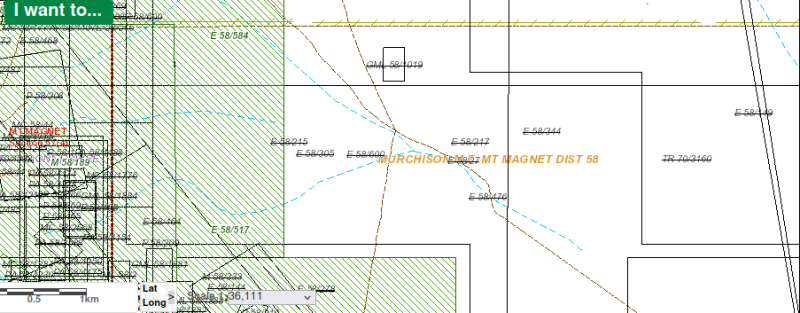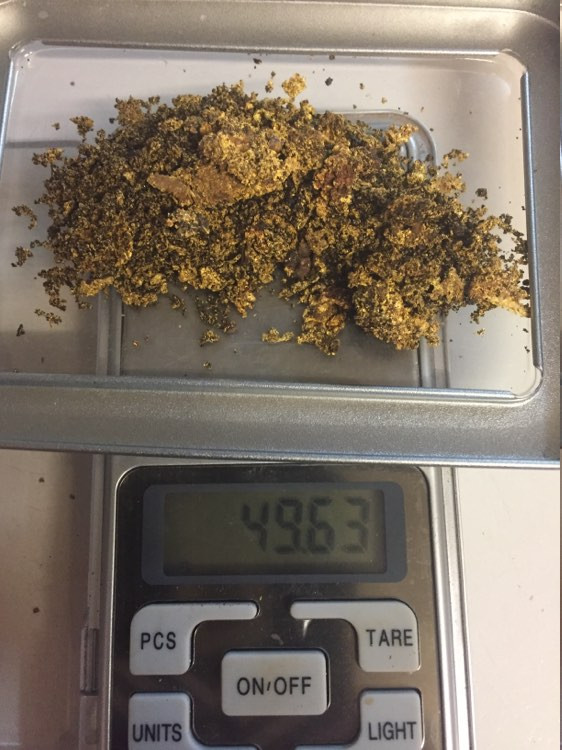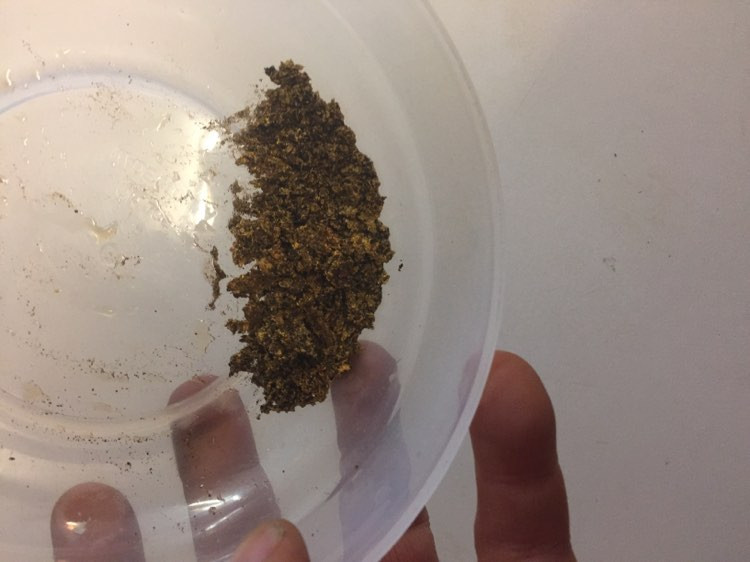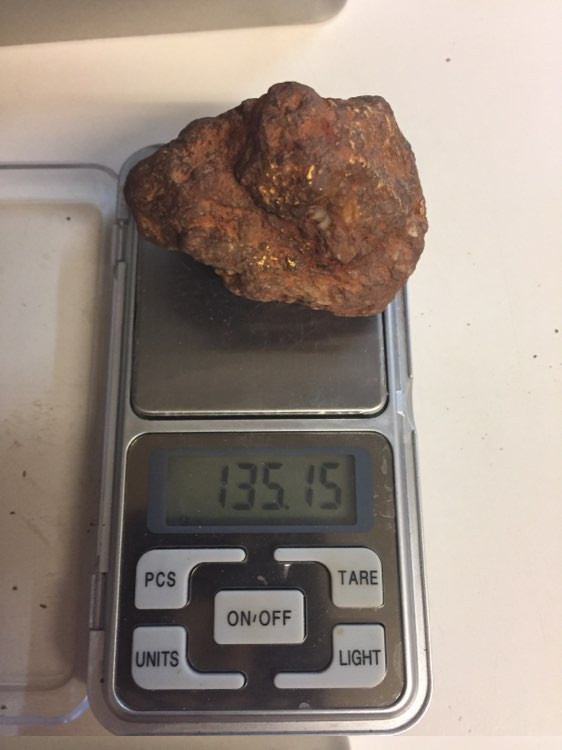
kingswood
-
Posts
66 -
Joined
-
Last visited
Content Type
Forums
Detector Prospector Home
Detector Database
Downloads
Posts posted by kingswood
-
-
6 hours ago, Ethan in Adelaide said:
when we check contact zones do we use surface geo or bedrock map more? thanks
most of the time I use surface geo, then use mag imaging to define faults and structures.
-
16 hours ago, Dutchman4 said:
Kingswood,
I see in your list that you own the GPX6000 and GP3000 so you would know if the GP3000 with the 24x12 ufo mono would have a depth advantage over the GPX6 on larger gold. If this advantage is minimal then I will just get the 17x13 mono for the 6000 and hope it adds some depth over the stock 11.
If all you are wanting to do is go over known patches while chaining to see anything missed at depth (and cant afford a 7000), then the 3000 with a large coil is a fairly decent option. The 3000 combo with the 24x12 UFO mono found buckets of deep gold years ago, theres no reason why it wont do the same now. Use whatever you can afford as a second machine.
The 6000 will detect big bits at very good depths....I know of a 1kg bit detected at just over a metre. It all depends on what you think may be down at depth. I have no idea which machine (3000 with big coil v 6000) will detect a 3g deeper as I havent ever tried a test on that. But all things considered, generally bigger coil equals bigger detection depth but drops a bit of sensitivity on smaller bits.
If I were in your situation (and I have been), I would use the 19" on the 7000 over everything else 🙂 But as you mention old machines, then the 3000 with a big coil may be an option as it "should" detected big bits at depth.....My 3000 doesnt really get much of a run these days as the 6000 is my general "go to" detector and I use the 7000 with the 19" as the depth detector on known patches to see if anything missed at depth.
-
4 hours ago, Dutchman4 said:
It is obvious to me that these patches are virgin ground since I am finding multiple nuggets up to 2.5 grams in size that should have been found by any PI machine and probably most VLF also.
The average depth of these nuggets was 5 to 10 inches.
Thats pretty cool.
A 3000 with a 24x12" ufo mono may be worth swinging over those areas.
-
1 hour ago, dig4gold said:
I would have to wonder with using an older model ML PI or GPZ 7000 that the bigger deeper gold you are looking for has not already been found with them back in there day. Hence the GPX 6000 mopping up the crumbs these days. A very high chance that any ground you go over has already seen many a coil over it. The gold doesn't tend to grow back.
D4G
Yeah i had the same thought too 🙂
If convinced its virgin ground, then would be interested to know the depth the larger bits found with the 6000 were found at.
-
3 hours ago, geof_junk said:
If the hole is too big for the little pick, it is worth while going a mile or two to get the big pick. ☺️
I would send the mate back 😉 ha ha
-
On 3/8/2024 at 3:55 AM, Jin said:
I'm starting to see the benefit of using my small pick a lot more now. For small gold most holes are shallow. Why lug around something that is overkill 90% of the time?
Yep thats me too. I dropped the larger pick a few years ago and now detect with the small pick hanging thru a tool belt pouch belted around the waist. If I need the larger pick, will just walk back and get it. I havent had to do that yet ha ha.
The tool pouch is awesome as it has a slot for the pick to slide into, a spot for the scoop and 2 pouches for GPS, gold jar etc.
-
21 hours ago, Ethan in Adelaide said:
Bro thank you and @Aureous. I am learning by asking question and listening from patient generous teachers like you guys. I have not thought about anything like dead tenemenet and contact zones before. Now it is another research course going on. Not even GML. After you mentioned I had a look oh good. lol
No worries. Everyone starts somewhere and I am thankful for all the help and advice I got when i started out 🙂
Often with old leases that I find interesting, I then flick into Geoview to see if there are any reports attached to it. Sometimes that gives you a bit of an idea of what work has been done. If it was a mining or exploration company their reports often have better maps than I could otherwise get, so I tend to save them. Their drill or surface sample results also often offer clues....often not large enough results for them to bother about, but worth a look as a prospector.
-
5 hours ago, Ethan in Adelaide said:
I have seen small patch in pending for P. very small. I wonder if it still has gold for now as the people who applied for it should have done the surface very well otherwise others would do it.
you mentioned paper trail. you mean tenement reports online? any links?
Thanks
There are so many factors to consider though....did the people who did the work use their own machines or hire? if hired its expensive and they could have rushed to get the bigger gold but likely left lots of bits behind.
Was it worked with new detectors or old? Older detectors could easily have left a few ounces of small bits behind.
Did they actually work the right area? They may have found a patch but due to hire constraints or time constraints, only scraped the area where they found a patch, but missed the other gold away from the patch.
Aureous is 100% correct, no one gets it all. I have found decent nuggets and speccies next to people's old dig holes. Many people have found nuggets in other peoples chained patches. Sometimes you swing from one direction and you wont hear the gold, but coming from another angle, you do detect it.
-
5 hours ago, Ethan in Adelaide said:
Hi Kingswood,
Just a few questions hope you don't mind answering them:
Old workings in a line, super exciting.....(you mean mines in a line like a strike?)
Dead SPL's (I only saw P or PA in tengraph when use dead tenement section, never seen any SPL?)
Dead leases in random unexpected places(what kind of leases are they?)
detect the edges of the contact zones (what is contact zones?)
Thanks,
Ethan
No worries.
Old workings....could be shafts or could be shallow pits. They are evidence that the old timers were onto something...panning along and digging pits or shallow workings trying to dig onto the source. Remember that these guys were loaming not detecting and usually didnt waste their time digging random pits. They mean that they found something in the pan and were spending time trying to locate the best place to drop a shaft. Multiple pits like this are a great sign for gold detecting as it often indicates that there is (or was) as source around there.
Dead SPL's are on tenegraph. They will end with an "S", so something like PXX/xxxx-s. Thats an SPL.
Any dead lease in a random spot. Could be a prospecting license or an old mining license. If you are looking at tenegraph and theres a dead P or M somewhere random on an active E or on vacant ground, its worth a drive out to have a look. Remember need a 40E to detect on a live E. It could be an indicator that something of interest was found many years ago as someone went to the trouble of pegging and applying for it.
Like in this attached example: see the old GML in the middle of nowhere? Have to ask yourself why is it there? Did someone find something? Are there old workings there that havent been surveyed?? Its always worth a look....
Contact zones are basically where different rock types have come together, for example granite and greenstones. Its important as its related to tectonic movement that forced the rocks together and possibly allowed gold bearing fluids to be forced into the zone. Where there are contact zones, there will also likely be faults, fractures and fissures. Gold in WA is where it is because of geological reasons. If the geo isnt there, the gold usually wont be either. Even when we consider secondary gold in laterite, its where it is because of the underlying well covered bedrock geology. Some of the contact zones are quite obvious at a surface level, but others are covered by many hundreds of metres of overburden. Its why geo maps and mag imaging are an important tool.
-
Just from my own experience, Dead tenements dont really mean much to me at all...simply as the majority of the gold areas will have dead tenements dating back to the old 1890 GML's.....
Old workings in a line, super exciting.....
Dead SPL's, great!
Dead leases in random unexpected places, kinda interesting and worth looking at.
Tony is 100% correct in saying to detect the edges of the contact zones though. The majority of WA gold is close to fractures/faults and contact zones.
-
Never had an issue with the Torus paired to the 6000. Works very well.
More rugged housing would be good but apart from that, I have no complaints at all.
-
took me 6 months of detecting once a weekend before I finally scored a small 0.2g!
My problem for the first 6 months was that I was using a PI mine detector with silent threshold....literally only dug loud signals. Finally scored a bit the first time out with the 2300....sucked and licked that bit about 40 times while staring at it to make sure it was actually gold 🙂
Looking back, I think I walked over gold with the mine detector......I just didnt know at the time that I should have investigated the small squeaks and farts....
-
0.343g.
Happy New Year 🙂
-
1 hour ago, Carolina said:
Vibration handle been around a long time. VALLON used it 10 years ago in their PI detectors. Military detectors. No beep for the enemy to hear. Still use it.
Not to mention telescopic rods and sliding arm rests 🙂
-
1 hour ago, Jim McCulloch said:
Around 1900, a book was published detailing large Australian nugget finds. Can someone kindly supply title, author, and publication info? Thanks!
This one?
https://victoriancollections.net.au/items/523a963a2162ef1d6c430f42
-
Much appreciated.
Very useful chart!
-
4 hours ago, Aureous said:
I believe the Americans call them a 'sweater' or in Australia its often called a 'Hoodie' lol
I'd call that a windcheater 🙂
-
17 hours ago, Gold Catcher said:
I am am headset guy. Makes me always a bit nervous when prospecting in the middle if nowhere and I don't hear what's going on around me. Desert is a bit better than thick forrest where you can't see whats coming at you (animals or crazy guys on drugs- plenty of them in some areas).
GC
Yep my biggest fear and the reason I dont ever use headphones. Was detecting in a quite remote area on my own one day and heard a bark...then another bark, then a growl....Needless to say I hurried back to the car. The 7000 would have turned into an expensive club that day if it was needed. If i am going to be attacked by dogs, I would rather stand a chance of hearing them first. I even start heading back to the car if I see a reasonable fresh dog poo!!
I am not really a fan of killing animals, however with the sheep and cattle losses here to wild dog packs, I understand it.
-
On 3/12/2022 at 2:36 AM, Gerry in Idaho said:
Someday somewhere there will be a new list of names, sizes and finders of such mammoth Au discoveries.
We keep reaching father off the beaten paths and deeper into the ground. So many places have yet a coil over them but time will tell.
Thanks for sharing.
Even big finds in well worked areas. Amazes me that you can still find the odd sunbaker in areas that have been "well" detected. Just goes to show you that no one gets its all. Should have zigged, but you zagged and missed a sunbaker by that much....
-
12 minutes ago, Northeast said:
Dig everything.
Even more so in areas you already have gotten gold out of 🙂
This is where I think the 6000 shines....So I pinged a small small bit....it makes you slow down. Slowed down, dug each signal, ended up with a few more...slowed down again, found 3g sunbaker :)....
Then back to chain area....28 bits and counting, still havent finished chaining with the 6000....every time I move further up, I get more bits....And then i have to put the 19" GPZ coil over the ground that looks deeper!!
I always like to break the monotony of chaining by just having a wander around before I go home....bam!...large speccie 230 metres away....
If I had not found the first tiny bit, I would not have gone back to the area again and again 🙂
-
Great finds NorthEast! Well done!
Got to love bonus hot rock gold 🙂
have you noticed any particular warbles?? Every target has sounded the same to me, except thin wire...
With the 7, there was a kinda "gold warble"...the 6000 so far (to me) sounds pretty much the same on everything, just volume is different. dig everything I guess, like i generally do anyway.
The specimen is a case in point...loud initial signal, 2 boot scrapes and it was overloading....almost was thinking big steel bolt.
-
-
crushed and panned 🙂
Currently sitting outside drying in the sun before weigh in.
I reckon about 25g.
Now...Just on the 6000, I cant say i am noticing any double blips on gold...or hi/low...so far literally everything has just sounded loud!...Even those small lead shot...The only thing that has sounded a bit different is very small squiggly bits of wire...They sound hollow'ish like gold on the 7000...
maybe I need hearing aides...
-





Dead Tenements, Are They Important And Why? For Western Australia
in Detector Prospector Forum
Posted
I mostly use the 1:100,000 maps, so looking at contacts where the greenstones have come into contact with granite or with ultramafics are always worth a look. Rrf is laterite and is often worth looking at. Its essentially the same as CZL on the older maps. The thing about laterite though is that its in a lot of places and a lot of it doesnt have gold. I tend to look at laterite that is within areas of greenstones or ultramafics. Mag imaging then is often useful as it can show whats beneath the laterite. This is important as the gold in the laterite comes from the bedrock source, so laterite that formed on gold bearing bedrock, may often have gold. I would advise you to have a quick read of some of Butt's work into supergene gold. Areas of "wash", so the colluvial and alluvial units, are often worth looking at also if surrounded by geo thats favourable to gold formation.
Bedrock Geo isnt as good as mag imaging in showing faults especially smaller splay faults. Mag imaging allows better definition of where the faults are and what smaller faults may be coming off the main faults. Often gold is more associated with the splay faults than with the main fault. Some of the faults dont even show up on Geoview mag imaging, but do show up on company aeromag imaging so often I try and find that too. Often its hidden in company reports or appendices to their reports.
Dead SPL's always worth looking at using a 40E on the live E 🙂 generally they usually mean that someone found something worth pegging and then going thru the often long process of getting a SPL approved. detecting around the old SPL's is always a good plan as been in an area where gold has been previously often means there is more gold around. In places like that its worth looking at the geo of the SPL and seeing how far that similar or same geo extends around the area.
Drill hole results are good to look at as it may give an idea of where the gold could be. Higher results from drill holes may not be economic for mining, but can guide the detectorist about where gold could be. Surface sampling the same. I usually would look at the results and plot the results (either sampling or drill hole) into google earth to see if there is any pattern to it. Sometimes you end up finding a pattern and can sort of make sense of which way a gold source may be running. I tend to favour surface samples over drill hole results mainly as the surface sampling is often closer together.
So in summary: Some people are happy to just wander around areas that look prospective for gold, while others like lots of homework ha ha 🙂